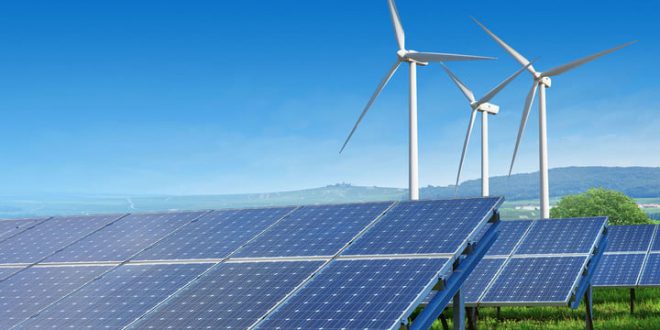Wind power’s global growth rate slowed slightly last year. with a 3.6 percent drop in new installed capacity as compared to 2017’s growth rate. Despite this small dip. however. the overall growth of the global wind market has continued to grow relatively steadily since 2014. with over 50 gigawatts of new wind energy capacity installed every year. What’s more. the growth is expecting to continue picking up in the coming years. According to the Global Wind Energy Council 51.3 gigawatts (GW) of new wind energy capacity were installed over the course of the last year. bringing the total installed capacity worldwide–the measure of how much wind energy can be produced at maximum output levels. not how much is actually being generated in real time) to 591 GW by the end of 2018. While the growth rate itself has slowed. this is still nearly a 10 percent increase globally as compared to installed total capacity at the end of 2017.
This global growth was largely fueled by just one country–China. Ben Backwell. CEO of Global Wind Energy Council. observed that China emerged as the clear frontrunner in both “both onshore and offshore growth.“ and that “huge growth“ can be anticipated in Asia as a whole “through the coming decade and beyond.“ Overall. the 51.3 GW total of wind energy capacity added in the past year can be broken down into 46.8 GW of new onshore capacity and just 4.49 GW of new offshore capacity.
Although offshore wind power capacity accounts for little of the total growth. it is one side of the wind industry that did see considerable growth in the past year. offsetting the overall global wind capacity slowdown. The growth in the offshore wind sector was dominated by China. which installed the biggest share of new capacity at 1.8 GW. for the first time beating out all other markets. The second biggest contributor was the United Kingdom with 1.3 GW. followed by Germany with .9 GW. This marks a striking decline for both Germany and the UK. with Germany’s onshore wind growth decreasing by more than half. and the UK faring even worse. delivering its least successful year for new wind power installation since 2011.
Meanwhile. according to WindEurope. the self-proclaimed “voice of the wind energy industry“. says that 12 countries in the EU did not install “a single wind turbine“ in all of 2018. For their part. Latin America. Southeast Asia and Africa contributed 10 percent of new onshore installations last year.
The Global Wind Energy Council’s Director of Market Intelligence Karin Ohlenforst projects that overall. the global wind power market will continue to grow at a relatively steady pace. with “55 GW or more to be added each year until 2023.“ with a major pick-up in the offshore sector. which she said can be expected to “grow on a global scale and will reach up to 7GW to 8GW of new capacity during 2022 and 2023.`
China will likely continue to be the frontrunner in this arena. and Ohlenforst says that if policies. projects. and investment continues on their current trajectory in Asia. the region could potentially add 5 GW or more of new capacity each year. Another major contributor to the offshore sector could be the United States. which is currently developing a fledgling offshore wind market presence that could potentially reach 1 GW by 2022 or 2023 by the The Global Wind Energy Council’s estimate.
The need for continued support for wind power from policies. projects. and investment is a key caveat in the continued growth of installed wind capacity worldwide. If growth is to continue steadily or even speed up. it will have to be bolstered by governments in key regions like Southeast Asia. and the European Union will have to push harder to reignite their nations’ growth in the wind energy industry as well. However. at this point it seems clear that Asia is on track to take over the industry as Europe has already begun to lag behind. Ben Backwell. CEO of The Global Wind Energy Council. did not mince words when he said that his company expects “huge growth in Asia through the coming decade and beyond as part of the continuing shift from Europe to Asia as the driving region for wind development.`
 Iran Energy News Oil, Gas, Petrochemical and Energy Field Specialized Channel
Iran Energy News Oil, Gas, Petrochemical and Energy Field Specialized Channel




